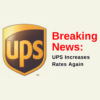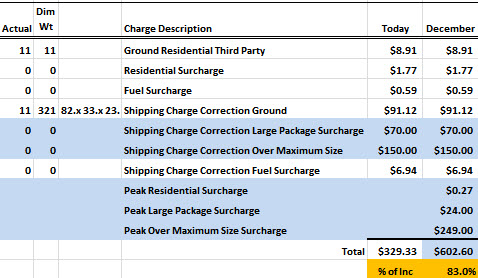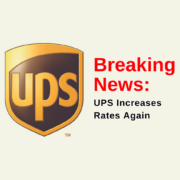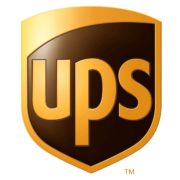An Early Holiday Present from UPS!
UPS’ New Peak Surcharges and What it Means for You
Actually, the holiday present is for UPS and not for UPS’ customers. We’ve all heard the rumblings for months and now we know what UPS has been planning regarding the imposition of new surcharges UPS calls “New Peak Charge.”
It’s been obvious for years that UPS’ shipping volumes spike significantly during peak holiday shipping periods. During those peak shipping periods, UPS, (and FedEx for that matter), continuously flex their systems by adding additional equipment capacity and additional labor to handle the large volumes of additional packages in an effort to ensure on-time delivery of those holiday packages. Now, UPS is planning to pass part of the cost, or all of those costs, (no one is really sure), on the backs of many of their most loyal customers.
The official word from UPS according to Alan Gershenson, UPS Chief Commercial Officer is that the additional charges are required to allow UPS to “continue to provide best-in-class value to customers while offsetting some of the additional expenses incurred during significant volume surges.” “We’re focused on helping our customers achieve success during some of their most important selling seasons.” “Our goal is to help every customer obtain the delivery capacity they need, combined with predictable and timely service they count on from UPS.” Certainly sounds logical to us; who wouldn’t want those assurances? However, it’s not the assurances their loyal customers will question, it’s the cost of those assurances that we’re sure is going to irk UPS’ customers.
While we agree with the philosophical aspect of these new surcharges, there may be a large price for UPS to pay. For one thing, we haven’t heard from FedEx yet as to whether they will implement similar surcharges. So, will UPS see a dilution of these peak season packages moving to FedEx? And if so, how successful will FedEx be in delivering these packages on time during the peak holiday season? After all, their systems are also severely challenged during these heavy shipping periods. We’re fairly certain that USPS will not implement a similar peak season surcharge, so how many holiday packages will shift to USPS during the peak holiday shipping season; and how many of those packages will remain in the USPS system long after the peak season is over? Only time will tell.
UPS has announced that they will also be adding additional peak season surcharges for residential delivered packages originating within the 48 contiguous states to destinations within Alaska, Hawaii or Puerto Rico. These surcharges are due to be published on or before August 1, 2017 according to UPS.
Here is an overview of the new peak season surcharges for each package addressed to a location that is a home, including a business operating out of a home. Surcharges apply to packages with origin and destination within the 48 contiguous states and packages with Alaska and Hawaii origin.
UPS Ground, Including Ground with Freight Pricing
November 19th through December 2nd, 2017 – $0.27 per package
December 17th through December 23rd, 2017 – $0.27 per package
UPS Next Day Air Early, UPS Next Day Air, UPS Next Day Air Saver
December 17th through December 23rd, 2017 – $0.81 per package
UPS 2nd Day Air AM, UPS 2nd Day Air, UPS 3 Day Select
December 17th through December 23rd, 2017 – $0.97 per package
Peak Surcharge Applied to Large Packages for ALL Service Levels to ALL Domestic Destinations
A Peak Surcharge will apply to packages with length plus girth (2X width + 2X height combined over 130 inches.
November 19th through December 23rd, 2017 – $24.00 per package
Note: This surcharge is not restricted to residential deliveries
Peak Surcharge Applied to Over Maximum Limits Packages for ALL Service Levels to ALL Domestic Destinations
A Peak Surcharge will apply to packages with an actual weight of more than 150 lbs. or packages that exceed 108 inches in length, or that exceed 165 inches in length plus girth combined.
November 19th through December 23rd 2017 – $249.00 per package
To give you a sense of the magnitude of these new Peak Surcharges for Large Packages and Over Maximum Limit Packages, the following is an example of an actual shipment of carpet under UPS’ current pricing for a large carpet retailer. We added the “new” costs that will apply once these new Peak Surcharges become applicable.
In the example above, a shipment of one roll of carpet was tendered to UPS as an 11 pound package for a residential delivery. This shipper thankfully has a negotiated Dimensional Weight Divisor of 194. After UPS received the shipment, a shipping charge correction was issued, because while the shipment’s actual weight was only 11 pounds, under UPS’ Dimensional Weight Pricing provisions, the weight was changed to 321 pounds, changing the shipment charge from $8.91 to an additional $91.12, plus the current $70.00 Large Package Surcharge and $150.00 for Over Maximum Size packages.
Once the new Peak Surcharges become applicable this shipment will also be subject to a Peak Residential Surcharge of $.027; a Peak Large Package Surcharge of $24.00 and a Peak Over Maximum Size Surcharge of $249.00, making the new charges 83% higher than the current shipment cost. Just think of the impact these new surcharges will have on all businesses that ship Large Packages and Over Maximum Packages. UPS is counting on these packages shifting to their UPS Freight trucking division and getting them out of the parcel operations all together and these additional fees will certainly make that a reality.
But wait, that’s not all, UPS’ customers who import goods into the US will also be dealing with Peak Surcharges as detailed below.
United States Import Peak Surcharges
Packages imported to the US in designated international lanes will be subject to a Peak Surcharge during specified Peak Periods. UPS advises they will provide the applicable lanes, Peak Surcharges and Peak Periods which will be published on the UPS website on or before September 1, 2017. UPS also advises that these import surcharges will be “updated from time to time as applicable lanes, peak periods and/or Peak Surcharges change.”
The message for UPS shippers in so far as imports are concerned is that these Peak Season Surcharges will apparently be changing on a regular basis causing havoc for shippers trying to budget their import freight costs.
Overall UPS’ message to their shipper customers in establishing these new Peak Surcharges is that UPS is no longer willing to bear all of the costs for increased peak shipping volumes. One question we have is, with the assessment of these additional fees, does UPS expect to be more successful in delivering holiday merchandise on time, or is this just a way of improving their revenues. We’ll let you be the judge!
UPS’ shipper customers need to understand it’s time to thoroughly analyze the financial impact these surcharges will have on their freight budgets. We’re sure many shippers are not going to take these increases sitting down. What impact will these surcharges have on their customer order and delivery commitments of holiday merchandise? How much product will now be diverted to retail store deliveries for customer pick up to avoid residential deliveries, something UPS would obviously be happy to see as a new and emerging trend. If you’re a retailer and you haven’t thought about these Peak Surcharge issues yet, it’s time to put your thinking cap on and decide what options are available to mitigate these additional costs.






